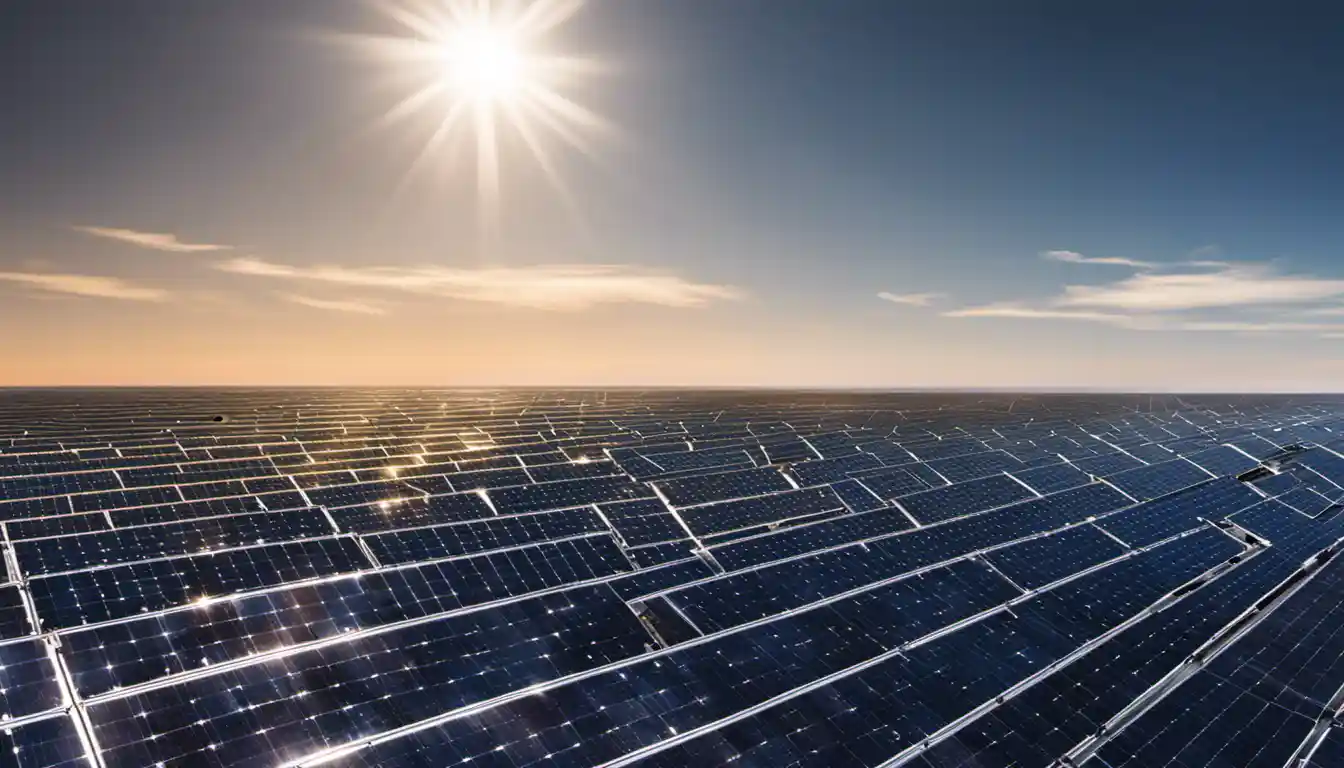Introduction
Tidal energy and solar energy are both forms of renewable energy, however they harness power from different natural resources. Tidal energy is generated from the gravitational effect of the moon on Earth’s oceans, using turbines placed underwater to create energy. On the other hand, solar energy utilizes the sun’s rays, employing photovoltaic cells in solar panels to convert sunlight into electricity.
Understanding Renewable Energy
Renewable energy sources are those that replenish naturally over time and include sunlight, wind, water, and geothermal heat. They’re fundamental in reducing greenhouse gas emissions and decreasing our dependence on fossil fuels. And so, we delve into the difference between tidal energy and solar energy, two of the most promising renewable energy frontiers.
What is Tidal Energy?
Tidal energy, also called tidal power, is the harnessing of the change in water levels due to the gravitational effects of the moon and, to some extent, the sun on the world’s oceans. This natural and predictable movement of water drives turbines that generate electricity, making it a potentially significant source of renewable energy.
What is Solar Energy?
Solar energy is sourced directly from the sun’s radiation. It’s arguably the most abundant form of renewable energy on Earth. We use solar panels, which contain photovoltaic cells, to convert sunlight into electricity. From powering homes to heating water and even charging electric cars, the variety of applications for solar energy is impressive.
Analysis of Tidal Energy
The Mechanism of Tidal Energy
Tidal power operates similarly to wind energy, but instead of air, flowing water moves the turbines. There are three types of tidal energy systems: tidal streams, tidal lagoons, and tidal barrages. Each ceases the kinetic energy from flowing water caused by the tide’s ebb and flow, converting it to mechanical energy, which is then transformed into electricity.
The Efficiency and Predictability of Tidal Energy

Tidal energy benefits from a key advantage over other renewable energy sources: predictability. Ocean tides are highly reliable, following known lunar cycles. Therefore, tidal energy production can be accurately orchestrated to perfectly coincide with peak energy demands.
The Technology Used in Tidal Energy Production
Most tidal power plants use a barrage or dam with built-in turbines. The dam stores up water during the high tide, which is then released to turn the turbines during low tide. Newer technologies such as tidal stream generators, which work like underwater wind turbines, and tidal kites, which are underwater gliders equipped with turbines, are also increasingly being deployed.
The Potential Environmental Impacts of Tidal Energy
Like all energy sources, tidal energy has potential environmental drawbacks. Dam structures may alter marine ecosystems, and the turbines may pose risks to marine life. Nonetheless, technology and regulatory design are consistently developing to mitigate these impacts.
The Benefits and Applications of Tidal Energy
In addition to being a predictable and renewable power source, tidal energy is also remarkable for its high efficiency. Also, in coastal areas with appropriate conditions, it’s an impeccable energy solution with near-zero carbon emissions.
The Limitations and Challenges in Tidal Energy
While promising, tidal power is not without its share of challenges. The initial costs can be high, and suitable sites are geographically limited to regions with high tidal ranges. The potential impact on marine ecosystems is another concern to reckon with.
Recent Advances in Tidal Energy
The tide is turning favorably for tidal energy, thanks to advancements in technology. The introduction of floating turbines and tidal kites shows potential for a wider reach and lesser environmental impact, promising a better future for tidal energy.
Analysis of Solar Energy
The Mechanism of Solar Energy

Sunlight is converted into electricity using photovoltaic cells in solar panels. When the sun’s rays hit the cells, they force electrons to move, creating an electrical current. This electricity is then used directly, stored in solar batteries, or even sent back to the power grid.
The Efficiency and Predictability of Solar Energy
While the sun’s energy output is consistent at its source, factors such as weather, geographic location, and time of year can affect the efficiency of solar energy capture.
The Technology Used in Solar Energy Production
The most common technology used in solar energy are photovoltaic (PV) cells in solar panels. Solar energy arrays can vary in size, from small rooftop installations to sprawling solar farms. Innovative technology such as thin-film solar and solar tiles are continuously being developed.
Environmental Factors Affecting Solar Energy
While sunny skies lead to optimal solar energy production, cloudy conditions can reduce efficiency. Likewise, geographical location affects the amount of daily sunlight and the angle at which it hits the PV cells. Nearby shade from trees or buildings can also impact solar energy production.
The Benefits and Applications of Solar Energy
Solar power systems don’t require water to generate electricity, making them suitable for arid regions. They also produce no direct greenhouse gases and, once installed, operate quietly and cleanly for many years. Some homeowners have even come to enjoy the financial benefit of selling excess power back to the grid.
The Limitations and Challenges in Solar Energy
Solar power relies heavily on the presence of sunlight, so it can’t produce electricity during the night and may produce less on cloudy or foggy days. Additionally, solar panels require a significant amount of space, which might not suit all property types.
Recent Advances in Solar Energy

The solar industry is truly on the cutting edge with innovations like perovskite solar cells, which promise to be cheaper and more efficient than traditional silicon cells, and ‘solar skins’, which blend in with the design of the building or object they are placed on.
Comparing Tidal Energy and Solar Energy
Difference in Efficiency
Generally, solar panels convert around 15-22% of solar energy into usable energy, while tidal energy technology is said to have an energy conversion rate of over 80%. This effectively makes tidal power more efficient, though it’s significantly more geographically limited.
Difference in Predictability
Tidal energy generation can be forecast years in advance with impressive accuracy, as tides are driven by the consistent motion of the Earth-moon system. Solar energy, however, depends on weather and seasonal factors and is therefore less predictable.
Difference in Cost-effectiveness
Upfront costs can be high for both solar and tidal energy systems, but they provide long-term savings by reducing dependence on commercially supplied energy. As it stands today, solar energy systems are generally cheaper and easier to maintain than tidal energy systems.
Environmental Impact Comparison
Both tidal energy and solar energy pose minimal risk to the environment compared to fossil fuels. However, solar panels may have a broader environmental impact concerning their manufacturing, transportation, installation, and recycling processes.
Conclusion
So, as we comprehensively dissect the analysis of tidal energy vs solar energy, each stands out with its unique potential and challenges. With continuous advancements in technology and increasing efficiency, both are paving the way towards a greener tomorrow. Renewable energy is not a one-size-fits-all solution, and so the right choice between tidal and solar energy will depend on your geographical location, energy needs, and more. As a seasoned expert, my recommendation is to always deliberate on your options, and when in doubt, don’t hesitate to seek professional advice.



